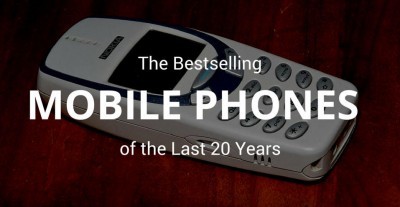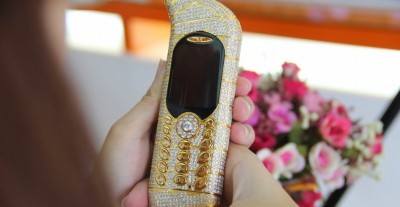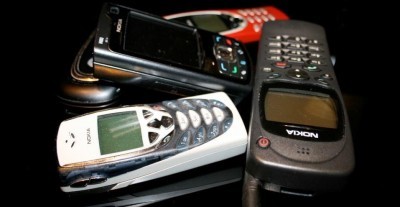Mobile Phone Usage Statistics in the UK: How Many Smartphone Users Are There
Ever wondered how many people in the UK own a mobile phone? Ever pondered over the question of whether or not your mobile use was normal or excessive? Mobile phones are ubiquitous nowadays, and the way we use our phones is changing. We’re taking a look at all the must-know statistics about mobile phones and phone usage in the UK, so you can know exactly how you measure up.
The Basics
Before we start looking at some numbers it might be useful to know some basic facts so that you can see just how big some of these numbers really are. According to the Office for National Statistics, the current population of the UK is around 66 million, of which around 55 million live in England, 5.5 million in Scotland, 3 million in Wales and 2 million in Northern Ireland.
About 16% of these people are over the age of 65, and around 19% are under the age of 16. The break down between sexes is pretty even, with about 49.8% being male, and 50.2% being female. There’s around 27.2 million households (single people living alone or unrelated people living together), and about 19 million families in the UK. The UK covers a land area of about 242,495 square kilometres (around 150,679 square miles).
With those basic facts in mind, let’s take a look at just how many of those people are using mobiles.
Mobile Statistics: The Basics
Surprisingly, the actual number of people owning a mobile phone is pretty difficult to gauge. This is because official surveys tend not to take into account those under the age of 18 (which obviously makes up a fair proportion of the mobile market these days). Statista estimates that around 94% of adults own a mobile (up from 82% in 2005), and that around 86% of 12 to 18 year olds regularly use a mobile.
Obviously this is a huge number of people, and means that pretty much everyone these days owns a mobile phone.
What Kind of Phones Do We Own?
According to the most up to date research from Statcounter, Apple owns by far the largest market share in the UK when it comes to mobiles. The breakdown of mobile ownership by brand looks like this:
- Apple 60.65%
- Samsung 22.17%
- Huawei 3.83%
- Motorola 2.15%
- Lenovo 1.44%
- Other 1.39%
Which Operators Do We Use?
Breaking down operators by market share is tough because market share reports tend to lump together all operators that use the same network. So, for example, BT and EE are rated as the same company because they use the same network. Basically, though, the numbers look like this according to Statista:
- BT (including EE) 28%
- O2 26%
- Vodafone 21%
- Three 12%
- Tesco Mobile 6%
- Virgin Mobile 4%
- TalkTalk 1%
Wikipedia, however, breaks down operators by number of subscribers based on each company’s annual business report, so can give a more detailed view of how UK operators break down, those this does not take into account people who may have more than one phone attached to their account (such as parents):
- EE 25.9 million subscribers
- O2 24.8 million subscribers
- Vodafone 17 million subscribers
- Three 13 million subscribers
Of course, many of these big name operators also lease their infrastructure to smaller MVNOs (mobile virtual network operators), like Giffgaff and Lycamobile, so the number of people subscribed to O2, for example, doesn’t mean that all those people have O2 contracts.
What About Mobile Coverage?

Mobile coverage in the UK is excellent when compared to many other countries. According to OFCOM (the UK regulator for communications services) the break down of mobile coverage by operator looks like this:
- EE (including all services that use EE’s networks, including BT, Asda Mobile, The Phone Coop, Virgin Mobile, Axis Mobile, Natterbox, PlusNet, and Vectone Mobile): 99% 2G coverage, 98% 3G coverage, 93% 4G coverage
- O2 (including all services that use O2’s networks including Giffgaff, Tesco Mobile, Sky Mobile, Lycamobile, and TalkTalk): 99% 2G coverage, 98% 3G coverage, 97% 4G coverage
- Three (including all services that use Three’s networks including iD Mobile, The People’s Operator and Globalgig): 0% 2G coverage, 97% 3G coverage, 97% 4G coverage
- Vodafone (including all services that use Vodafone’s networks including Talk Mobile, Cortel, Glemnet, Highnet and Lebara): 98% 2G coverage, 89% 3G coverage, 86% 4G coverage
And Mobile Data Speeds?
Of course, even if you’re getting good coverage, that doesn’t mean that you’re getting good speeds. Mobile data speeds are important, since you’ll want to load web pages quickly, be able to stream videos and even tether when Wi-Fi isn't an option. So which operators offer the best data speeds?
3G Speeds
3G speeds aren’t as fast as 4G speeds, but since 3G tends to have better coverage in the UK, it is a more reliable connection. The break down of average 3G speeds looks like this:
- Three (and all MVNOs that use Three’s infrastructure): 7.82 Mbps
- EE (and all MVNOs that use EE’s infrastructure): 7.17 Mbps
- O2 (and all MVNOs that use O2’s infrastructure): 4.58 Mbps
- Vodafone (and all MVNOs that use Vodafone’s infrastructure): 4.58 Mbps
4G Speeds
If you’re looking for fast 4G speeds then you’ll really want to go with EE or one of their piggyback networks. According to Which.co.uk the 4G average speed break down looks like this:
- EE (and all MVNOs that use EE’s infrastructure): 28.9 Mbps
- Vodafone (and all MVNOs that use Vodafone’s infrastructure): 21.92 Mbps
- Three (and all MVNOs that use Three’s infrastructure): 18.78 Mbps
- O2 (and all MVNOs that use O2’s infrastructure): 14.61 Mbps
Which Operator is Best?
Which operator is best really depends on you and your needs as a customer. However, Which.co.uk do conduct an annual survey to find out which networks customers are most satisfied with. This takes into account not only service but also customer service. According to the 2018 survey, the best operators in the UK are Utility Warehouse and the MVNO, GiffGaff. Interestingly, the same survey showed that big-name networks, most notably EE and Vodafone ranked worst when it came to customer satisfaction.
How Do We Use Our Phones?
Annually, OFCOM releases a survey of communications in the UK, giving statistics on not only mobile usage but also landline, fixed line and television use. The latest 2017 study shows the following:
- 6 billion calling minutes were used on mobile in 2017 (down from 151.2 billion minutes in 2016)
- 82 billion SMS and MMS messages were sent in 2017
- An average of two hours and 28 minutes spent are spent on a smartphone per day by users
When it comes to online time, things are a little tougher to figure out. Taking into account not only web browsers, but also apps such as Netflix and games that use online connections means that knowing how much data is used across the UK is a little problematic. The average amount of data used per person is 1.88 GB per month, or 22.56 GB a year. Multiply that by the roughly 60 million mobile users in the UK and you get… a lot around 1.4 billion GB.
What About Apps?

Mobile apps are booming (according to Techjury, there are over 3.4 million on the Google App store), and most of us access some kind of app at least once a day (and many of us use multiple apps multiple times a day). According to the same OFCOM 2017 survey, the apps with the biggest outreach (number of people using them) are:
- Google Play Store: 88% of adults
- Chrome: 85% of adults
- Google Maps: 75% of adults
- Facebook Messenger: 71% of adults
- Facebook: 71% of adults
- WhatsApp: 71% of adults
- YouTube: 71% of adults
- Gmail: 62% of adults
- Instagram: 39% of adults
- eBay: 39% of adults
- Twitter: 37% of adults
- Amazon Shopping: 36% of adults
- BBC News: 28% of adults
- Outlook: 22% of adults
- Spotify: 22% of adults
- PayPal: 21% of adults
- Sanpchat: 21% of adults
- BBC weather: 18% of adults
- LinkedIn: 16% of adults
None of these are huge surprises since the list contains apps that most of us would consider essential. What’s maybe a little more interesting is how we use those apps:
- On average a Facebook user will open the Facebook app 7 times a day with an average use of 60 seconds per session
- WhatsApp users average a whopping 74 sessions on the app per day, with each session lasting around 25 seconds
- Instagram users only access the app an average of three times a day for around 60 seconds each time
- Amazon shoppers also access their app a lot, with around 74 sessions per day each lasting around 25 seconds, however, do note that a “session” is counted as an individual product page, so really they look at about 74 items per day
- Most apps are used between 6 and 7 a.m., followed closely by 9 to 10 p.m.
- Smartphones are checked on average once every 12 minutes
Other Interesting Data
There are some other statistics that don’t fall under the above headings, but that are still quite interesting. The 2018 Mobile Consumer Survey, conducted by Deloitte, found that:
- 64% of people claim that their mobile distracts them at work
- 12% of people would immediately switch to superfast 5G data speeds if they were available
- 48% of people use fingerprint recognition for smartphone security
- 84% of people are worried that their personal data is being shared by third parties by mobile apps
Additionally, a survey by YouGov found that:
- 55% of people checked their phones during mealtimes
- 54% of people couldn’t be without their phone for more than two days
- 20% of people couldn’t go more than two hours without checking their phones
- 65% of people use their phones in bed
Take Away Data
From all the above statistics it’s very clear that mobile phone use across the UK is extreme. With nearly all of us owning a mobile, and many of us spending multiple hours a day on our phones, perhaps the worrying trend here should be that of how our phones can impact our health.
Smartphone addiction is now recognised as a real thing, just as real as drug, alcohol, and gambling addiction. With symptoms including anxiety and irritability and withdrawal symptoms associated with not using a phone, smartphone addiction is a worrying trend. Just check out these statistics from Deloitte:
- 10% of people grab their smartphones as soon as they wake up, 33% pick them up within five minutes of waking
- A third of adults report having argued with their spouse about their mobile usage
- A third of adults report checking their phones in the middle of the night
Clearly, mobile phones have tons of advantages. They do have their downsides, however, and possible addiction or an increase in risk of cybercrime are two of the main ones.
The other clearly researched health issue is that of “screen time” and sleep and eye strain. The use of bright blue tinted light in modern phone screens not only causes eye strain when you spend too much time looking at your phone but can also impact your sleep schedule if you use your phone in bed.
With the mobile market booming in the UK, we have to be aware of the disadvantages of heavy mobile use as well as the distinct advantages.
Mobiles in the UK: The Bottom Line
Mobile phones aren’t going anywhere, though for the first time in a decade the number of calls made on mobiles has dropped in the past year. Mobiles are indeed ubiquitous, and it’s easy to see why. They provide an easy, relatively cheap way to stay in touch, no matter where you are in the country. But with so many of us spending so much time on our phones it is worth thinking about the way they are impacting our lives. Mobile phones might be wonderful, but they’re no substitute for real-life interactions.




